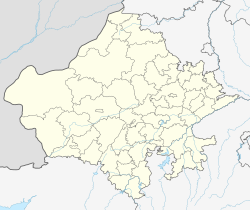| Jagdish Temple | |
|---|---|
 | |
| Religion | |
| Affiliation | Hinduism |
| District | Udaipur district |
| Location | |
| Location | Udaipur |
| State | Rajasthan |
| Country | India |
| Geographic coordinates | 24°34′47.4024″N73°41′1.899″E / 24.579834000°N 73.68386083°E |
Jagdish Temple is a large Hindu temple in the middle of Udaipur in Rajasthan, just outside the royal palace. It has been in continuous worship since 1651. A big tourist attraction, the temple was originally called the temple of Jagannath Rai but is now called Jagdish-ji. It is a major monument in Udaipur. [1]











